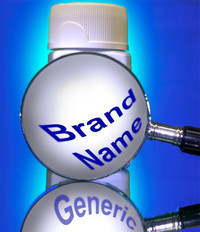One reason for distrust among physicians over using biosimilars in extrapolated* indications could be the fact that it is frequently cited that biosimilars are ‘similar but not identical’ compared to small molecule generics, which are often referred to as ‘identical’.
This ‘similarity’ principle appears to be confusing and may leave physicians uneasy with respect to the efficacy and/or safety of the biosimilar, especially in indications for which the biosimilar has not been directly tested.
It is true that no two biologicals can be identical due to the inherent variability of the biological expression system and the manufacturing process. However, Weise and co-authors point out that this is also the case for manufacturing changes of the originator biological. They add that originator biologicals are not, after several changes to their original manufacturing process, anymore identical to the original version at the time of marketing authorization [1].
The important thing is that the variability of a biosimilar is not expected to be greater than that of the reference product and all critical quality attributes, i.e. those that are important for the function of the molecule, must be comparable. This is the same as for an originator biological after a manufacturing change. And, in fact, the same scientific principles that underlie the comparability exercise for a change in manufacturing process also apply to the demonstration of biosimilarity.
Weise and co-authors therefore reassure physicians that over the past decades regulators have accumulated extensive experience in the assessment and judgement of such changes, and that, once approved, the new version is expected to have the same efficacy and safety in all therapeutic indications. This is true whether it be an originator biological after a manufacturing change or a biosimilar.
*Extrapolation involves extending and applying the data from clinical studies regarding one medical condition to another medical condition.
Disclaimer
The authors of the research paper [1] declared that they are members or experts of the European Medicines Agency's (EMA) Biosimilar Medicinal Products Working Party (BMWP). This paper [1] represents solely the views of the authors and should not be understood or quoted as being made on behalf of or reflecting the position of EMA or its committees.
Conflict of interest
The authors of the research paper [1] declared that there were no conflicts of interest.
Editor’s comment
If you are interested in contributing a research paper in a similar area to GaBI Journal, please send us your submission here.
If you would like to receive a PDF copy* of the Weise et al. paper [1], please send us an email.
*For profit organizations subjected to a fee
Related articles
Extrapolation for biosimilars
Biosimilars: when indications can be extrapolated
Extrapolation of indications in biosimilars: filgrastim
Extrapolation of indications in biosimilars: epoetin
Extrapolation of indications in biosimilars: infliximab
Reference
1. Weise M, Kurki P, Wolff-Holz E, Bielsky MC, Schneider CK. Biosimilars: the science of extrapolation. Blood. 2014 Oct 8. pii: blood-2014-06-583617. [Epub ahead of print]
Permission granted to reproduce for personal and non-commercial use only. All other reproduction, copy or reprinting of all or part of any ‘Content’ found on this website is strictly prohibited without the prior consent of the publisher. Contact the publisher to obtain permission before redistributing.
Copyright – Unless otherwise stated all contents of this website are © 2014 Pro PharmaCommunications International. All Rights Reserved.








 0
0











Post your comment